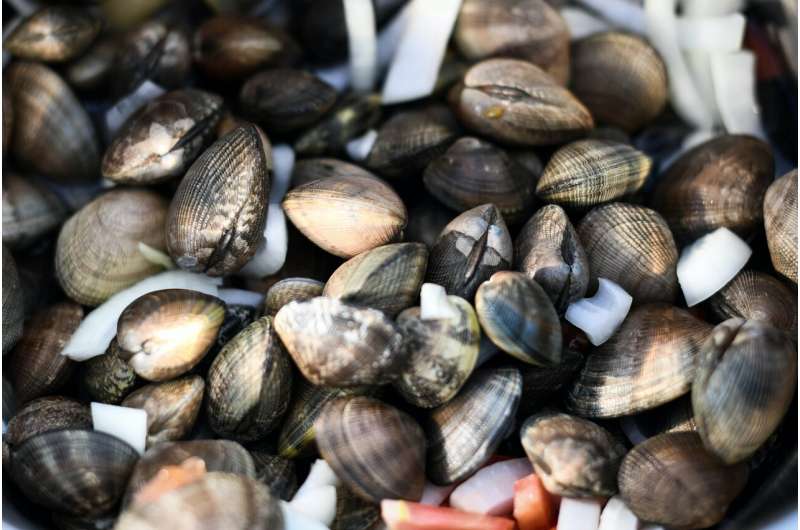This article has been reviewed according to Science X's editorial process and policies. Editors have highlighted the following attributes while ensuring the content's credibility:
fact-checked
reputable news agency
proofread
These creepy crawlies could be Florida's next big invasive threats, scientists say

Florida has long been home to an unnatural assortment of creatures from faraway lands and habitats, and these tourists turned permanent residents have wreaked havoc on the natural ecosystem.
You can thank the Burmese pythons slithering around the Everglades for the lack of marsh rabbits, and the Asian swamp eels are to blame for cratering populations of native crayfish and flagfish.
But what's next?
That's the subject of new research from the University of Florida, where scientists tried to predict which species could be the next contender for the Sunshine State's most annoying new invasive.
Scientists analyzed nearly 500 potential candidates before narrowing the field to 40 species that could pose the biggest threat.
Of those, four stood out. The UF team said the four species to watch out for next are alewife, zebra mussels, crab-eating macaques, and red swamp crayfish.
While the three marine species may not look impressive compared to the fanged beasts that draw the most headlines for their ecosystem-ruining behavior, they each could pose a real threat to Florida's food web.
The report doesn't suggest where these species might be likely to pop up next, but it does include predictions for how they might sneak into Florida, including hitchhiking on cargo containers or illegal releases from irresponsible pet owners.
The study mainly relies on a numerical model that scores and ranks the creatures based on their history of invading other places, how often Florida is exposed to places where they're already invasive, and if Florida is the right habitat for this species. Researchers also ran their findings past a panel of 28 experts in academia, wildlife management nonprofits, and government agencies.
Alewife
The alewife, a tiny herring fish, is already causing problems with the trout population in the Great Lakes area. Alewives eat trout larvae, reducing the population, but when adult trout consume too many of them, the bigger fish get a vitamin deficiency that hurts their reproductive abilities.
They were originally introduced to freshwater lakes as prey for game fish, according to the USDA's Invasive.org, and haven't yet been spotted in Florida.
Zebra Mussels
Zebra mussels are already considered one of the "world's worst" invaders. Originally from the Black, Aral, and Caspian seas in Eurasia, the shellfish have since made homes all around Europe, Great Britain, North America, Russia, and Scandinavia.
Scientists figure they spread through ballast water from large ships, which first brought them to the Great Lakes region in the 1980s, according to the USGS.
"Zebra mussels negatively impact ecosystems in many ways. They filter out algae that native species need for food and they attach to—and incapacitate—native mussels. Power plants must also spend millions of dollars removing zebra mussels from clogged water intakes," the USGS website reads.
They haven't been found in the wild in Florida yet, but a Gainesville pet shop was cited in 2021 after inspectors found one in a moss ball for sale in the shop.
Crab-eating Macaques
"The one that wasn't even on my radar was the macaque," lead author Diah Lieurance, who started the project while working at the University of Florida and is now an assistant professor of invasive species biology and management at Penn State, said in a statement.
"But they're already in the state in captivity, and as their name says, they're good at eating crabs. This means they would have an impact on our native biodiversity."
The crab-eating macaque was the only species on the list that ranked as a danger both to the ecosystem and to human health because the monkeys can carry diseases that affect humans. A close relative, the rhesus macaque, is already established in Silver Springs, Florida, and carries a deadly strain of herpes.
Red Swamp Crayfish
The red swamp crayfish, a hand-sized crustacean the color of a fire engine, is already a problem in Florida. According to the USGS, they tend to out-eat and out-compete native crayfish, as well as devour the eggs of other vulnerable species.
"Its introduction may cause dramatic changes in native plant and animal communities," a report from the Fish and Wildlife Service said.
Floridians that spot one of these critters, or any other nonnative animals, can report sightings at the FWC's Invasive Species Hotline at 888-Ive-Got1 (483-4681) to report nonnative animals.
"We ask the public to call the Hotline to report high-priority species, which include all nonnative snakes, monitor lizards, and tegus," the agency said.
©2023 Miami Herald.
Distributed by Tribune Content Agency, LLC.




















